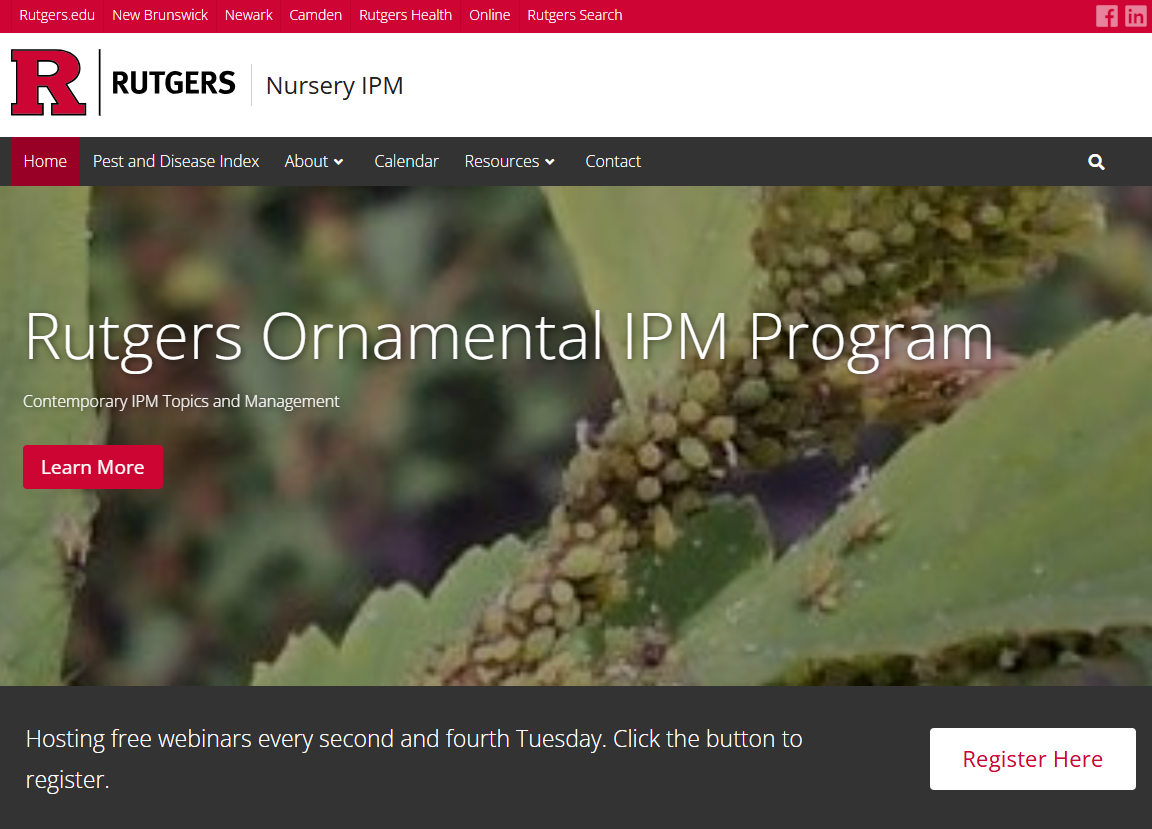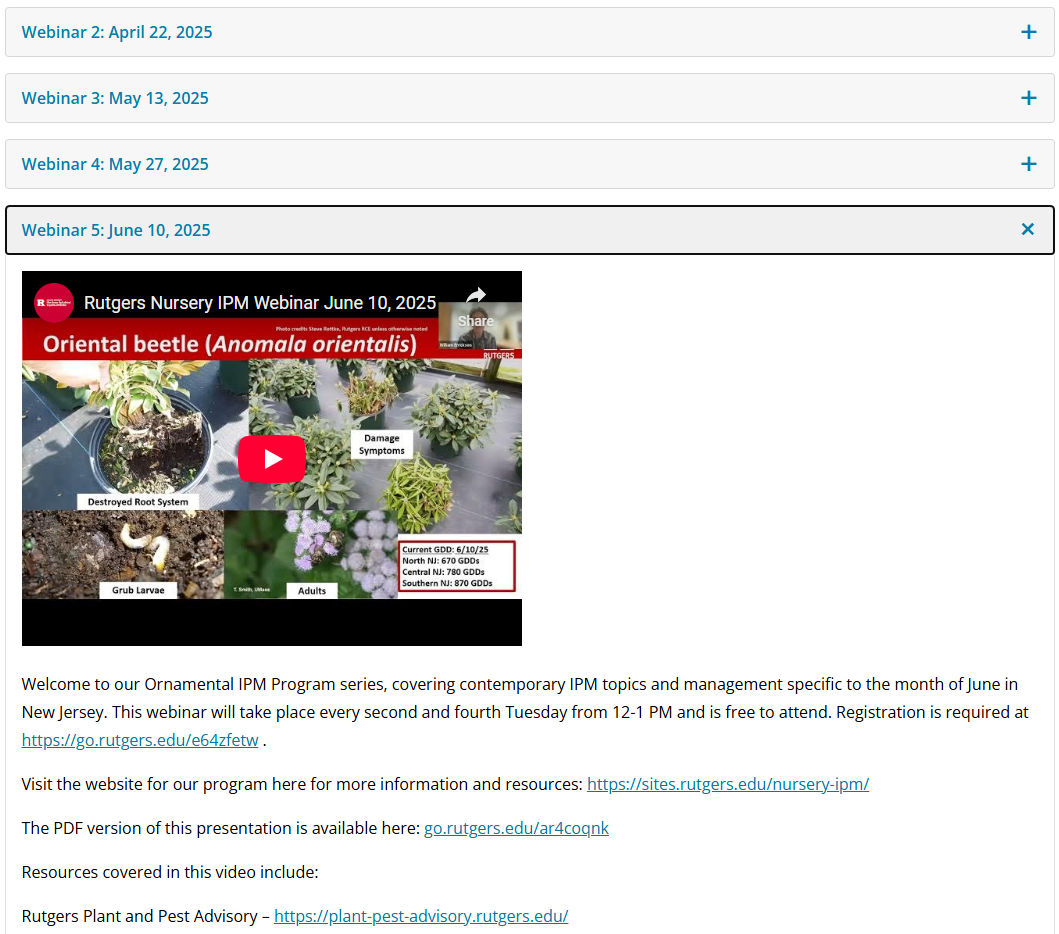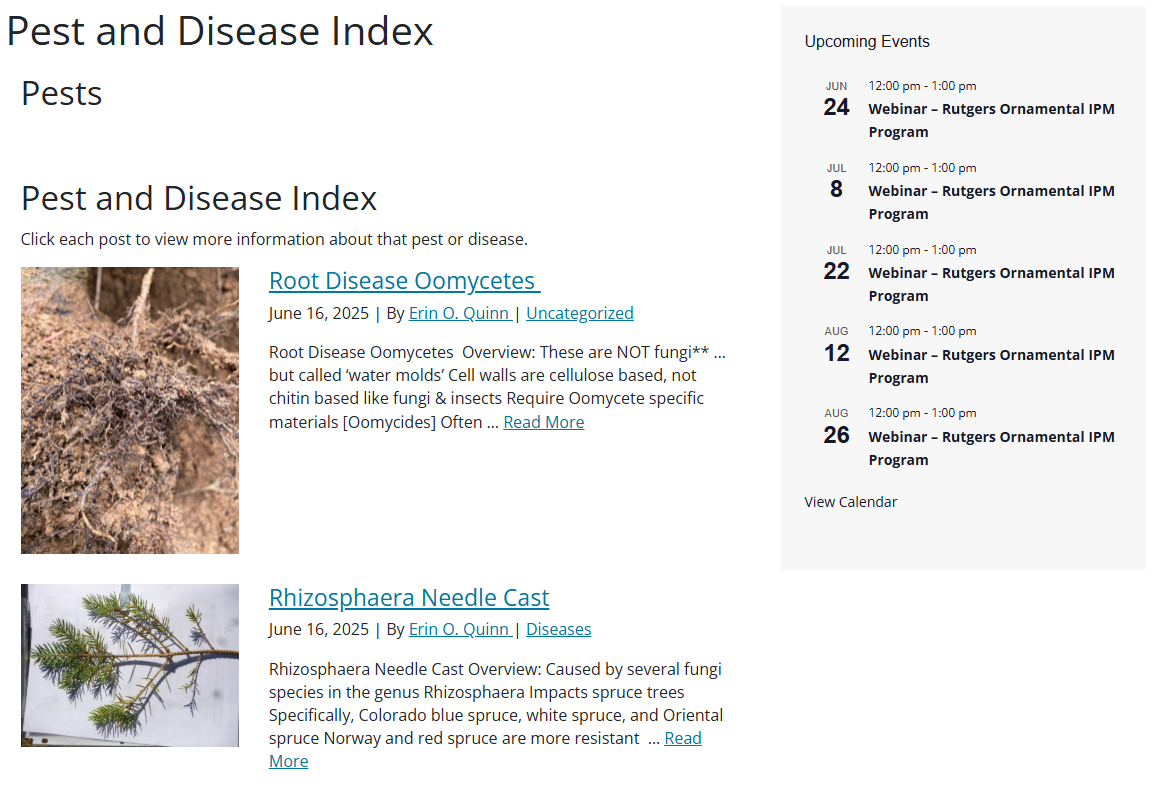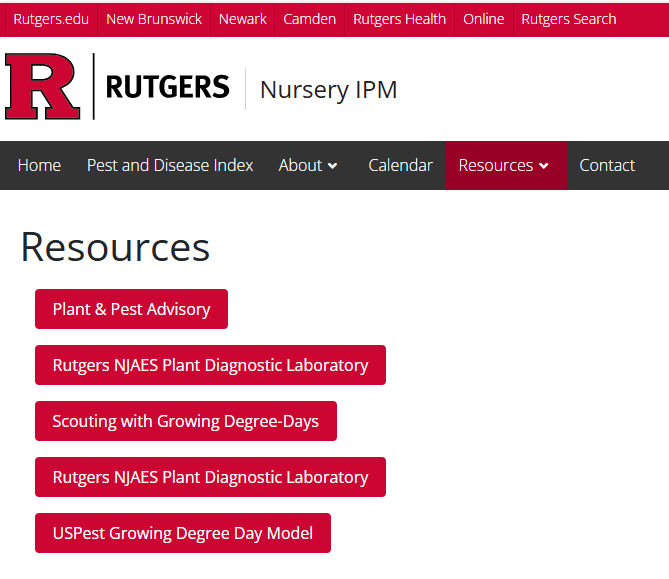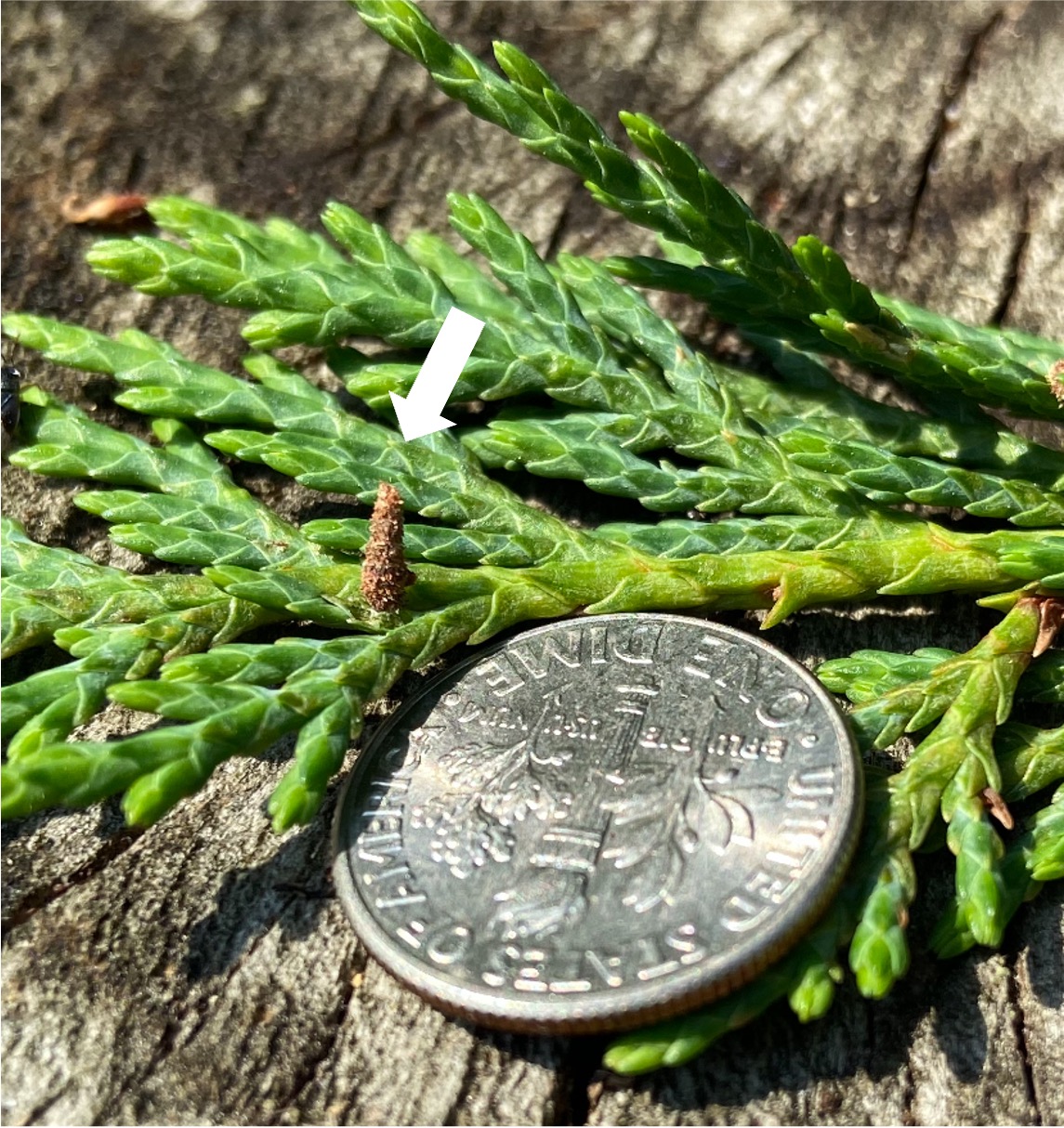Join us for the Final Ornamental IPM webinar Tuesday 9/23/25
Still time to Sign up (click here) for the final remaining 2025 session
Topics to be covered:
- Beneficial insect: Preying mantids
- Mums
- White pine aphid
- Eastern spruce gall adelgid
- Cooley spruce gall adelgid
- Hemlock woolly adelgid
- Spruce spider mite
- Southern red spider mite
- Hemlock rust mite
- Fall practices for sanitation
- Importance of fall irrigation in field settings
- Using horticultural dormant oil
- Questions to consider regarding your nursery IPM monitoring program
Please visit our new –Rutgers Ornamental IPM Program Website (click here)
More details and registration links to follow in the coming days – once CEUs and collaborators are finalized. NOTE: CEUs have been applied for but those listed below are not guaranteed. Both events are in-person in Cumberland County, NJ.

